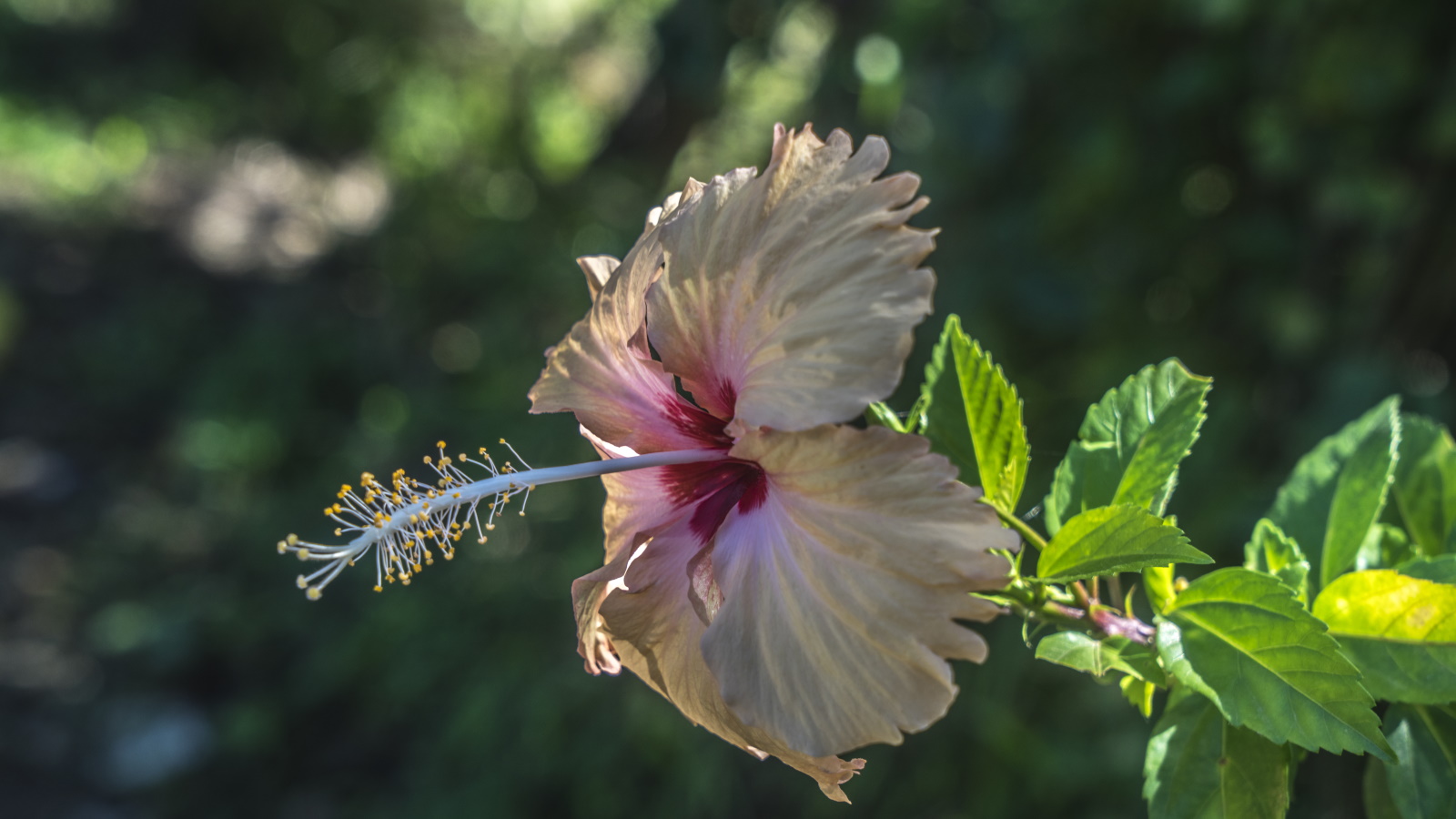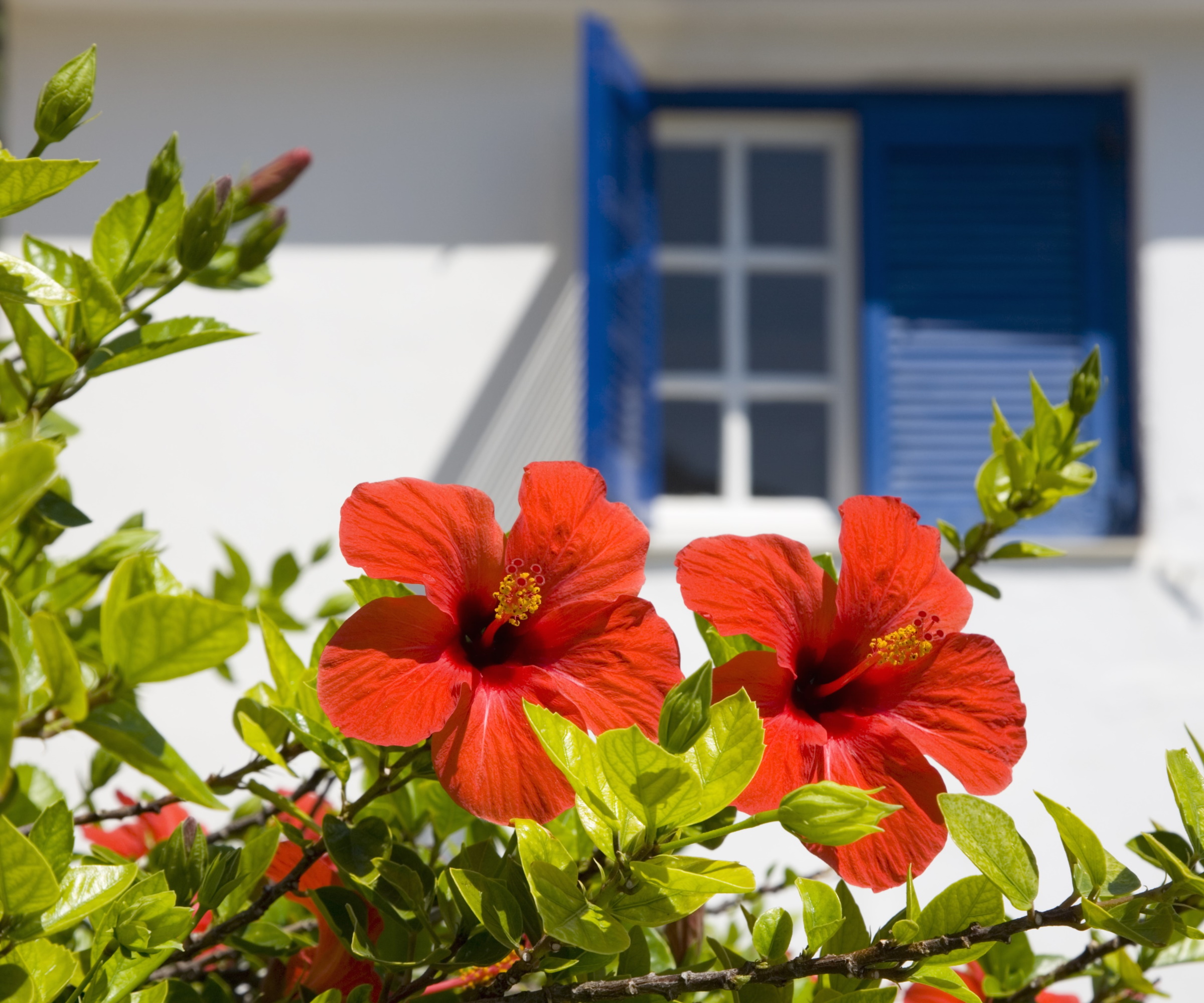Is it necessary to deadhead hibiscus flowers? Gardening experts share hibiscus growing secrets
Deadheading spent blooms can help to improve the appearance of shrubs and extend flowering, but it might not be necessary for every hibiscus species


Hibiscus shrubs are striking additions to any garden border. Notable for producing a bounty of vibrant blooms, learning how to grow hibiscus in your backyard will help to add color and impact, which will be attractive to those gardeners seeking tropical garden ideas.
There is no shortage of hibiscus shrubs available to buy, from deep purple to white and almost every color in between, there is a plant to suit any taste. And, what's more, there are hardy and tender categories of hibiscus, meaning that regardless of climate, location, or US hardiness zone, most gardeners can find a hibiscus that will thrive in their yard.
While hibiscus shrubs are notoriously easy to grow, there is often uncertainty as to whether these tropical-looking plants require deadheading after the blooms begin to fade. Here, professional gardeners discuss whether it is necessary to deadhead hibiscus flowers, and if so, how best to remove spent blooms.

Hibiscus rosa-sinensis 'Brilliant' is a tropical shrub with stunning red blooms
Should I deadhead hibiscus flowers?
Deadheading flowers is an important process that can help improve the look of your plants and encourage more blooms by preventing seed production. This quick and easy gardening job takes no longer than a few minutes, and can often be a good mindful exercise in making gardeners stop and slow down.
While deadheading is usually recommended for most annuals and perennials, it is not always necessary for larger shrubs. So, we asked the experts if it is necessary for all hibiscus species.
Hibiscus species that can benefit from deadheading

Hibiscus rosa-sinensis shrubs can benefit from regular deadheading as flowers fade
'When I am looking for plants for both my garden center and my home, I look for beautiful and beneficial plants,' says Tricia Hunt, tropical plant expert and owner of Millstone Plant Nursery, 'and tropical hibiscus are perfectly suited to the job.'
Tropical varieties are popular plants for pollinators, and 'can be grown in US hardiness zone 9 to US hardiness zones 10 and above,' Tricia says.
Design expertise in your inbox – from inspiring decorating ideas and beautiful celebrity homes to practical gardening advice and shopping round-ups.
Alternatively, they can be grown in cooler zones so long as they are 'protected during the cool winter months.' Hence, learning how to winterize hibiscus is important.
'Tropical - or tender - hibiscus species keep their blooms from spring and summer through to the fall,' Tricia adds, 'and with the right care and maintenance through the growing season, these magnificent shrubs will reward you with a vibrant color unlike any other plant.'
Tropical hibiscus plants can benefit from deadheading through the spring and summer months and doing so regularly will 'encourage your plant to produce more and more beautiful blooms.'
If you reside in a warmer region, you may be able to grow tropical hibiscus plants in the ground, but for the majority, container growing will be the best option. Tropical hibiscus shrubs grown in a pot will be easier to deadhead, as their growth and size will be limited. For larger shrubs in the ground, a ladder might be needed, but do not worry about snipping every single faded flower.
The trick is to get as many faded blooms as possible so that energy is not wasted on seed production. The shrub will then continue to produce more and more flowers. While it is important to clear as many faded blooms as you can, helping to maintain an attractive and blossoming shrub, do not worry if some are unreachable.
Deadheading tropical hibiscus blooms - Hibiscus rosa-sinensis - is best done every 3 to 5 days. Many hibiscus blooms will open and fade within 1 to 2 days, so regular deadheading during the growing season is a task to keep on top of. Using clean, sharp secateurs remove the faded blooms and seed pods at the base, or simply use your hands to twist and pull the flowers away from the shrub.
Tropical hibiscus shrubs are available from Nature Hills.

Tricia is the owner and operator of Millstone Market & Nursery, located in the heart of Germantown, Tennessee. Tricia has grown and used moss for several years, appreciating the utility of this green groundcover.
Hibiscus species that do not require deadheading

Rose of Sharon, Hibiscus syriacus, is a hardy species that does not need deadheading
As a general rule, most hardy and native hibiscus shrubs do not require deadheading. While it is true that removing spent blooms can help to maintain shrubs and keep them looking their best, it does not tend to result in a second flush of blooms for these species.
This includes the native Hibiscus moscheutos, or swamp rose mallow and, also, Hibiscus syriacus, or rose of Sharon, native to Asia. Save yourself a gardening job this year and leave these hardy species alone as the blooms begin to fade. As mentioned above, many of these hardy varieties can reach large sizes when grown in the ground, so it is also not practical to deadhead every other day during the growing season.
'Certain hardy and native hibiscus varieties and species are great landscaping plants that can be used as hedging or as specimen shrubs, says Tatiana Anderson, tropical plant expert and co-founder of Top Tropicals. 'These plants can undergo heavy pruning during the fall and winter to maintain a specific shape.'
I would recommend that gardeners refrain from deadheading these shrubs and enjoy the ornamental appeal of the seedheads through the summer. While many people might be worried about some of the more vigorous species setting seed, by pruning in late fall and winter before the hibiscus seed has been dispersed, as Tatiana says, you will prevent this from happening.
Thus, learning how to prune hibiscus and how to prune a rose of Sharon is important, and maintaining your shrubs in the fall and winter will pay off. As a general rule, therefore, I would deadhead only those native or hardy hibiscus shrubs that are grown in pots, where it is easy to maintain an attractive-looking plant. Otherwise, for larger shrubs grown in the ground, forego the deadheading and remember to prune in the fall and winter to shape your shrub and clear the seedheads.
Hardy hibiscus, including the rose of Sharon shrubs, are available to buy from Nature Hills.

Tatiana Anderson is the co-owner and co-founder of Top Tropicals, based in Fort Myers, Florida. Top Tropicals grow and sell a whole range of flowering and fruiting tropical plants.
FAQs
How frequently should I deadhead tropical hibiscus shrubs?
Deadheading during the growing season should be a regular gardening job. Hibiscus blooms can open and fade within 24 to 48 hours, and so for those tropical shrubs that are grown in containers, deadheading for 5 minutes every other day can help to maintain an attractive and vibrant hibiscus plant. Using clean, sharp tools, or by using your hands, simply remove the spent flowers and seedpods as needed.
Deadheading is often an important task for gardeners to ensure that plants look their best and continue to bloom through the growing season. However, I recommend only deadheading the plants that will reward you with more blooms. Hardy and native hibiscus shrubs can be left alone, particularly large shrubs grown in the garden borders, and pruning these species in the fall and winter will help to prevent seeds from dispersing around the yard.
For more hibiscus growing advice, see our guide on how to grow hardy hibiscus in pots, and add vibrant blooms to your container displays this year.

Thomas is a Content Editor within the Gardens Team at Homes and Gardens. He has worked as a professional gardener for both public spaces and private estates, specializing in productive gardening, growing food and flowers. Trained in Horticulture at the Garden Museum, he has written on gardening and garden history for various publications, including The English Garden, Gardens Illustrated, Hortus, The London Gardener and Bloom. He has co-authored a Lonely Planet travel book, The Tree Atlas, due out in 2024.
